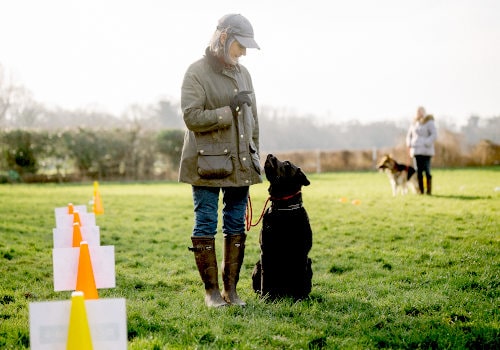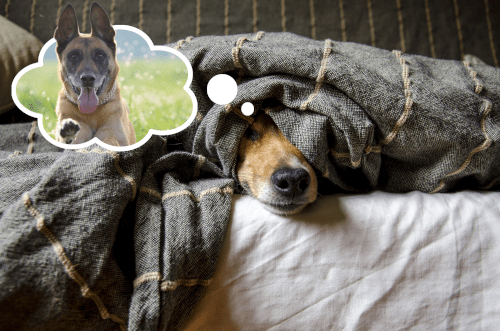
Hello Dog Owners!
Apart from saying that we’ve had a nice few days of what seems like Summer, I’m not going to talk about the weather, as I have more exciting things to talk about in this issue.
There are a couple of important announcements that I hope you may find really interesting.
Out of the number of people that receive DOT News in their inbox each month, I’ve been wondering as to how many of those people are actually engaging in some form of regular active training for their dogs.
Why not hit reply and let us know what training you get up to with your dog?
Out of the number of people I see out with their dogs on a daily basis, I only very, very, very occasionally see anybody engaging their dog in some form of training.
In actual fact, training your dog seems to be a rare occurrence these days.
I am constantly amazed at how people seem to be OK with their dog pulling them around, being reactive towards people and other dogs and to never be given the freedom of an off-leash life!
If those things were addressed, then a whole different world of having an enjoyable life together and be able to go virtually anywhere would open up, giving the dog the life it needs and the owner the life with their dog that they had probably always dreamed of…..when it was a puppy!
Well, I may just have the solution!
We finish off our reactive series this month, with a shorter discussion on exposure to other dogs and a supportive environment that can go a long way to help make massive improvements.
So, let’s get on with it!
TODAY IN 10 MINUTES OR LESS YOU’LL LEARN
✔️ The Need for Basic Obedience
✔️ How Training Together Helps Others
✔️ How To Realise Your Dreams
THE NEED FOR BASIC OBEDIENCE

Teaching your dog the most basic of commands can solve a whole host of common issues.
If your dog can Sit on command, then it can’t jump up people, chase the cat, pull on leash, run away or lunge for another dog.
If you have taught your dog to pay attention to you through Engagement, then it won’t be paying attention to other things, such as a squirrel or another dog.
If your dog likes you, wants to be with you and sees you as the most fun ever, through Play & Reward, then it won’t want to run away to go and see other dogs or pull on-leash, because there is more value in hanging around with you.
Granted, there are times when your dog will succumb to their instinctive behaviours to chase and go and see other dogs, especially during adolescence, but it is how these issues are dealt with that makes a huge difference and if ignored, will certainly increase the issues.
So we need to set some basic boundaries and introduce a bit of accountability.
Having a few positions – such as Sit and Down – to call upon in times of need can be very helpful indeed and can prove effective when dealing with reactivity.
“But my dog can Sit perfectly!”, you exclaim.
Having a good Sit that you can call upon is a process and although your dog may be able to sit on cue in the house or at the roadside when there are no distractions about, it may be a completely different story in a noisy park or street, with children running around, traffic hooting and other dogs pulling their owners along the street at the full extent of their Extendi-leads, barking and carrying on at your dog.
A “Sit!” request can quickly become an increasingly frustrating “Sit, Sit, Sit, Sit, Sit……” request.
Sit no longer works and these types of situations need to be trained for.
It is paramount that when you see another dog, you can call your dog towards you and into a Sit Front without yanking on the leash, when you see another dog.
It’s helpful if they can keep this sit until instructed otherwise, and for them to focus completely on you or an appropriate object such as a tug toy.
This takes structured practice, at first in the house, then the garden, then a quiet street or two, before heading into increasingly busier areas practicing the same thing over and over, so that it is solid.
Only when you have done that, do you have a chance of maintaining an element of control over your reactive dog, or can swiftly recover from their reactive episode.
It takes time, it takes practice, it takes commitment and it takes consistency.
“Sit”, “Down”, “Sit-Front”, “Watch” or “Look” can all be good commands to train when working with reactivity.
So how can we get our dog to pay attention to us and want to be with us?
We’ll speak about that in the next issue.
In the meantime, if you want to work on your dogs obedience, then why not check out the classes offered on the Community Dog Training schedule, when it launches?
HOW TRAINING TOGETHER HELPS OTHERS

So, you have a reactive dog and you’ve been working on obedience, engagement and have been practicing a few tactics.
Now what?
Well, have you thought of joining some form of obedience class?
I can’t! My Dog’s Reactive!
I hear you, but joining a class could be a good thing.
You see, if you’ve been working on some solid obedience stuff with your dog at home and out and about, then this will go some way to begin increasing their confidence somewhat.
Why would a confident dog need to be fear-reactive?
By attending a class, they get used to working in a controlled environment around other dogs that are paying attention to their owners, rather than the other dogs in the class and this will help desensitise them to the presence of other dogs, while doing something that they are familiar with.
Especially when they begin to enjoy the class.
Owners of reactive dogs always seem to shy away from getting their dog in and around other dogs and understandably so, it can be scary. But this is born more from their own insecurity and uncertainty, rather than their dogs reactivity.
It is also important to be attentive to the dogs needs, as not to put them in excessively stressful situations. However, they must experience some stress, in order for them to learn, just as with humans.
When training in the Martial Arts, it is important to learn how to take a punch. But how could you ever learn how to do this if you never allowed anybody to punch you, as you were stressed about being hit?
Working around other dogs will help you bond better with your dog, get your dog to trust you more, help you learn more about them and get you to trust them a little better and help them to learn how to be while around other dogs.
Not only that, you will be helping others in the process, if they have reactive dogs too!
Furthermore, it will help to increase everybody’s skills in the class, as their own dogs behaviour may change while in the presence of a reactive dog.
As long as your dog isn’t too disruptive, the dogs win, the other owners win and you win – That’s a WIN-WIN-WIN!
Why not keep your eye out for the Community Dog Training classes that are coming shortly?
HOW TO REALISE YOUR DREAMS

Let’s take a trip back in time to that point just before you got your dog.
What was your dream back then?
What did you envisage your future was going to be with your dog?
Did you see yourself walking your dog, off-leash, through the country-side?
Going to the local pub with your dog by your side?
Running along the beach, in and out of the sea while chasing their favourite ball?
Training your dog to be the next agility superstar?
To be able to walk with a group of other dog owners on a relaxed walk with all the dogs happy and running together full of joy?
What was it – your dream?
Do you still want it, or have you given up thinking about it?
We humans are fallible creatures really. We either don’t make any plans and just go with the flow hoping that things will turn out sort of alright, put up with things that don’t go quite right rather than changing them and give up totally on our dreams when life just gets in the way.
Why?
Because it just seems like too much effort.
Going to the gym on a regular basis to get that dream body is too much effort for most, but for those that are brave and committed enough to push through their limiting beliefs and consistently work at what they want to achieve, their dreams really do come true!
Did they need to work for it? Hell yeah!
Did they need to make their efforts a priority? Of course. Workout or binge-out?
And when they do reach their dreams after all that consistent hard work, people look at them and comment, “You’re lucky to have a body like that, I just see a cake and put on weight!”
Luck has nothing to do with it and you put on weight because you ate the cake!
Success comes to those that produce consistent applied effort. Period.
Going back to that dream you had for you and your dog…
How’s it going?
Have you achieved it?
Are you doing it?
Have you given up?
Or, didn’t you have one in the first place?
If you didn’t have a dream, then it’s not too late to get one.
The life of a dog is so very short and a year goes by so very quickly.
You’ve aged one year, your dog has practically aged an equivalent of 7 years!
Wow! That’s massive.
By the time they are just 7 years old, they are rapidly approaching 50 with their most active years passed and they now are looking at their oncoming old age.
How are they spending their days? Learning, or sleeping them away doing nothing, waiting for somebody to come home to take them out, so that they can walk around the block for 20 minutes, have a wee and maybe a poo, then go home again to sleep the evening away again by the TV?
What was your dream?
What was theirs, I wonder?
Things can change and they can change fast.
You can take your dog from where it is now to where you had always wanted it to be.
You can challenge yourself and challenge your dog to release their inner excellence!
You can start today, by logging on YouTube and teaching them the basics for free.
You can take them to a class and do it with others.
But do do it.
Don’t waste what little time you have left with your little four-legged friend.
Get them out, get you out and bring some fun back in your life!
You owe it to them and you owe it to yourself.
Take a look at the Community Dog Training schedule when it begins, I’m sure you will be able to go from Beginner to Advanced and rocket you and your dog onward to success!
See you there!
Until next time…
Happy Training!
I’d Rather Regret the Things I’ve Done,
Than to Regret the Things I Haven’t Done
~ (Lucille Ball)
– Stuart